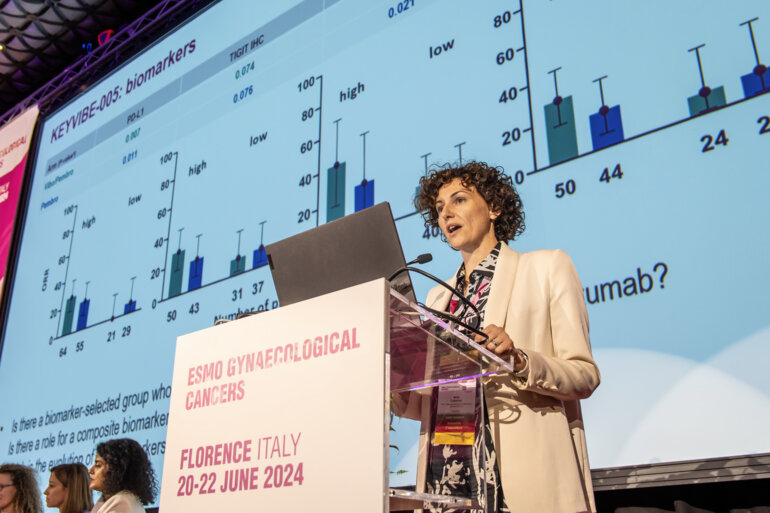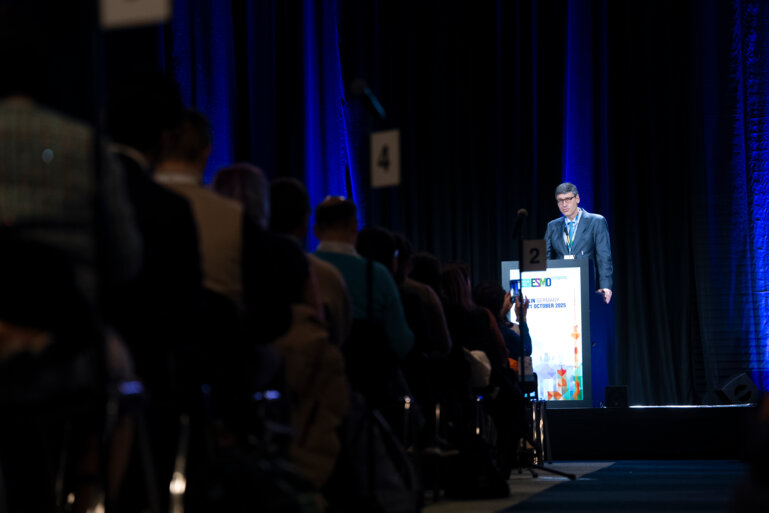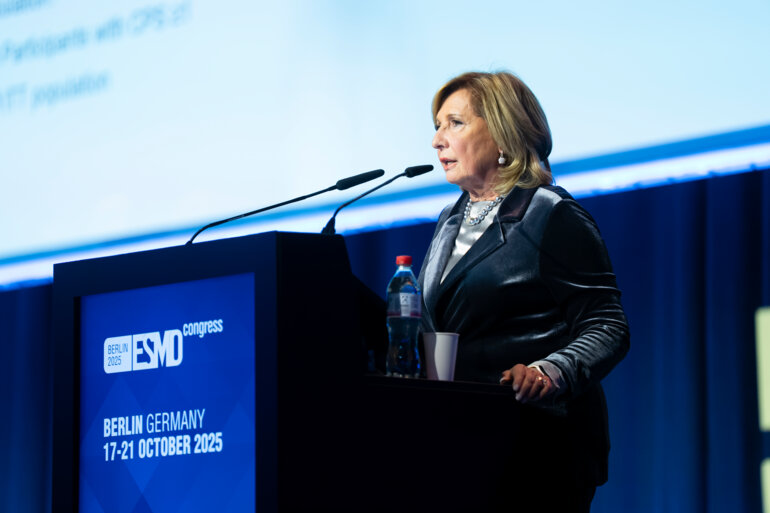However, studies highlight cost as an obstacle to widespread accessibility in some countries
Pembrolizumab plus chemoradiotherapy (CRT) has been proposed as the new standard of care for newly diagnosed, high-risk, locally advanced cervical cancer (LACC), and recently received US FDA approval based on results from the phase III ENGOT-cx11/GOG-3047/KEYNOTE-A18 trial (Lancet. 2024;403:1341–1350).
Findings from a subgroup analysis of the trial, in which one-quarter of patients were enrolled from East Asia (n=299/1060), were presented at the ESMO Gynaecological Cancers Congress 2024 (Florence, 20–22 June) and provide important corroboration of the main trial results (Abstract 23O). At a median follow-up of 19.3 months, the addition of pembrolizumab to CRT reduced the risk of progression or death by 45% (hazard ratio [HR] 0.55; 95% confidence interval 0.35–0.88) in the East Asia subgroup. Two-year progression-free survival (PFS) rates were 77.6% for pembrolizumab plus CRT and 59.8% for CRT alone.
“It is reassuring to see that the efficacy of adding pembrolizumab to CRT in the East Asian subgroup is at the same level as in the overall population, confirming the global benefit of this approach,” says Dr Ilaria Colombo from the Oncology Institute of Southern Switzerland, Bellinzona, Switzerland. “We know that the global burden of cervical cancer falls mainly on low- and middle-income countries (World Health Organization 2024). We also now understand that there are important differences between different races and ethnicities in patient outcomes and response to cancer treatments, and it is vital that we understand how results of clinical trials apply to patients globally.”
The results showed some evidence of increased grade ≥3 treatment-related adverse events in both arms of the subgroup analysis (78.3% and 77.4%) compared with the overall population (67.0% and 60.6%), which was particularly notable for haematological toxicities. “The fact that this increased toxicity was observed in both arms suggests that it is due to CRT, rather than pembrolizumab, and may reflect the higher use of non-intensity-modulated radiotherapy and non-volumetric-modulated arc radiotherapy techniques compared with the overall population,” observes Colombo.
The success of pembrolizumab has led to the investigation of other PD-1 inhibitors as partners for CRT. Also presented in Florence was a small Chinese phase II trial, which suggested that tislelizumab plus CRT may also be active for high-risk LACC, with a 1-year PFS rate of 100% among 25 evaluable patients (Abstract 26P). The results achieved with PD-1 inhibitors is in contrast to the failure of the PD-L1 inhibitor, durvalumab, in combination with CRT in a population of unselected patients with LACC in the CALLA trial (Lancet Oncol. 2023;24:1334–1348). “This reminds us that not all immune checkpoint inhibitors are the same and reasons for the differences in sensitivity between different types of agents is something that requires further exploration,” comments Colombo. Moreover, the distribution of stage and risk factors might be different among different trials, and Colombo thinks this needs to be taken into account when interpreting results.
The benefits associated with adding PD-1 inhibitors to CRT are good news, but only for patients in some countries. Inevitably, cost will be a major driver of accessibility to treatment. Another presentation at the Congress used data from the ENGOT-cx11/GOG-3047/KEYNOTE-A18 trial to estimate cost-effectiveness from the perspective of payers in America, Europe and Asia (Abstract 27P). The results showed that the increased costs of pembrolizumab plus CRT versus CRT alone were $346,479 for the USA, $236,776 for Italy and $29,027 for China. The combination was found to be cost-effective for the USA (incremental net health benefit: 0.21 quality-adjusted life-years [QALY]) and China (1.02 QALY) but not for Italy (−3.11 QALY) at the assumed willingness-to-pay thresholds for each country ($150,000/QALY for the USA, $43,749/QALY for Italy and $37,766/QALY for China).
“This analysis highlights the high cost and large price variation of immunotherapy between countries,” says Colombo. “It also underlines that healthcare systems in different countries have different ideas regarding what they are willing to pay for an effective treatment.” She goes on, “What we really need is increased worldwide implementation of strategies for cervical cancer prevention, such as improved vaccination programmes, which are probably the most cost-effective way to tackle the burden of this disease.”
Abstracts discussed
Xiang Y, et al. A randomized, phase 3, double-blind study of chemoradiotherapy with or without pembrolizumab in patients with high-risk, locally advanced, cervical cancer (KEYNOTE-A18/ENGOT-cx11/GOG-3047): Results for patients enrolled in Asia. ESMO Gynaecological Cancers Congress 2024, Abstract 23O
Proffered Paper Session, 20.06.2024, h. 14:45 – 16:15, Auditorium
Ma S, et al. Efficacy and safety of tislelizumab combined with concurrent chemoradiotherapy for high risk locally advanced cervical cancer. ESMO Gynaecological Cancers Congress 2024, Abstract 26P
Poster Display Session, 20.06.2024, h. 12:30 – 13:30, Foyer
Liu K, et al. Concurrent chemoradiotherapy and immunotherapy for locally advanced cervical cancer: A cost-effectiveness analysis based on the KEYNOTE-A18 trial. ESMO Gynaecological Cancers Congress 2024, Abstract 27P
Poster Display Session, 20.06.2024, h. 12:30 – 13:30, Foyer







